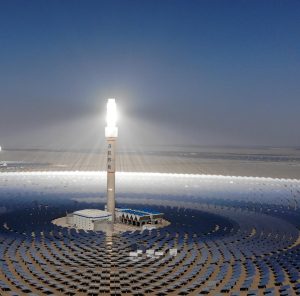The evolution of solar thermal energy has been a fascinating journey, with its roots dating back to ancient civilizations and its future looking brighter than ever. Solar thermal energy, which harnesses the sun’s heat to produce electricity, has come a long way since its early days. As we continue to seek out cleaner, more sustainable energy sources, it’s worth taking a moment to reflect on the history of solar thermal energy and consider its potential for the future.
The concept of using the sun’s heat for practical purposes can be traced back to ancient civilizations, such as the Greeks and Romans, who used passive solar design in their architecture to heat buildings. In the 18th century, Swiss scientist Horace-Bénédict de Saussure created the first solar oven, which used sunlight to heat food. This invention laid the groundwork for future developments in solar thermal technology.
The modern era of solar thermal energy began in the late 19th century when American inventor Clarence Kemp patented the first solar water heater in 1891. This invention marked a significant milestone in the history of solar thermal energy, as it demonstrated the practical application of harnessing the sun’s heat for everyday use. In the early 20th century, solar water heaters became increasingly popular in the United States, particularly in California, where the abundance of sunlight made them an attractive option for homeowners.
However, the widespread adoption of solar thermal technology was hindered by the discovery of vast oil reserves and the subsequent rise of the fossil fuel industry. As a result, solar thermal energy took a backseat to more conventional energy sources for several decades. It wasn’t until the energy crisis of the 1970s that interest in solar thermal energy was reignited, as skyrocketing oil prices prompted a renewed search for alternative energy sources.
In response to the energy crisis, the United States government invested heavily in solar thermal research and development, leading to significant advancements in the technology. One notable development was the creation of the parabolic trough, a type of solar thermal collector that uses curved mirrors to focus sunlight onto a central tube containing a heat transfer fluid. This design has since become the most common type of solar thermal power plant, with numerous large-scale installations operating around the world.
The early 21st century has seen a surge in the adoption of solar thermal energy, driven by growing concerns about climate change and the need for cleaner, more sustainable energy sources. In recent years, several countries have made significant investments in solar thermal power plants, including the United States, Spain, and China. These large-scale installations have helped to drive down the cost of solar thermal energy, making it an increasingly competitive option in the global energy market.
Looking ahead, the future of solar thermal energy appears promising. Advances in technology, such as the development of more efficient solar collectors and heat storage systems, have the potential to further improve the performance and cost-effectiveness of solar thermal power plants. Additionally, the integration of solar thermal energy with other renewable energy sources, such as wind and hydropower, could help to create more resilient and sustainable energy systems.
In conclusion, the evolution of solar thermal energy has been a remarkable journey, marked by periods of innovation, setbacks, and resurgence. As we face the challenges of climate change and the need for cleaner, more sustainable energy sources, solar thermal energy is poised to play an increasingly important role in our global energy mix. With continued investment in research and development, as well as supportive policies and incentives, solar thermal energy has the potential to become a major player in the transition to a more sustainable future.


